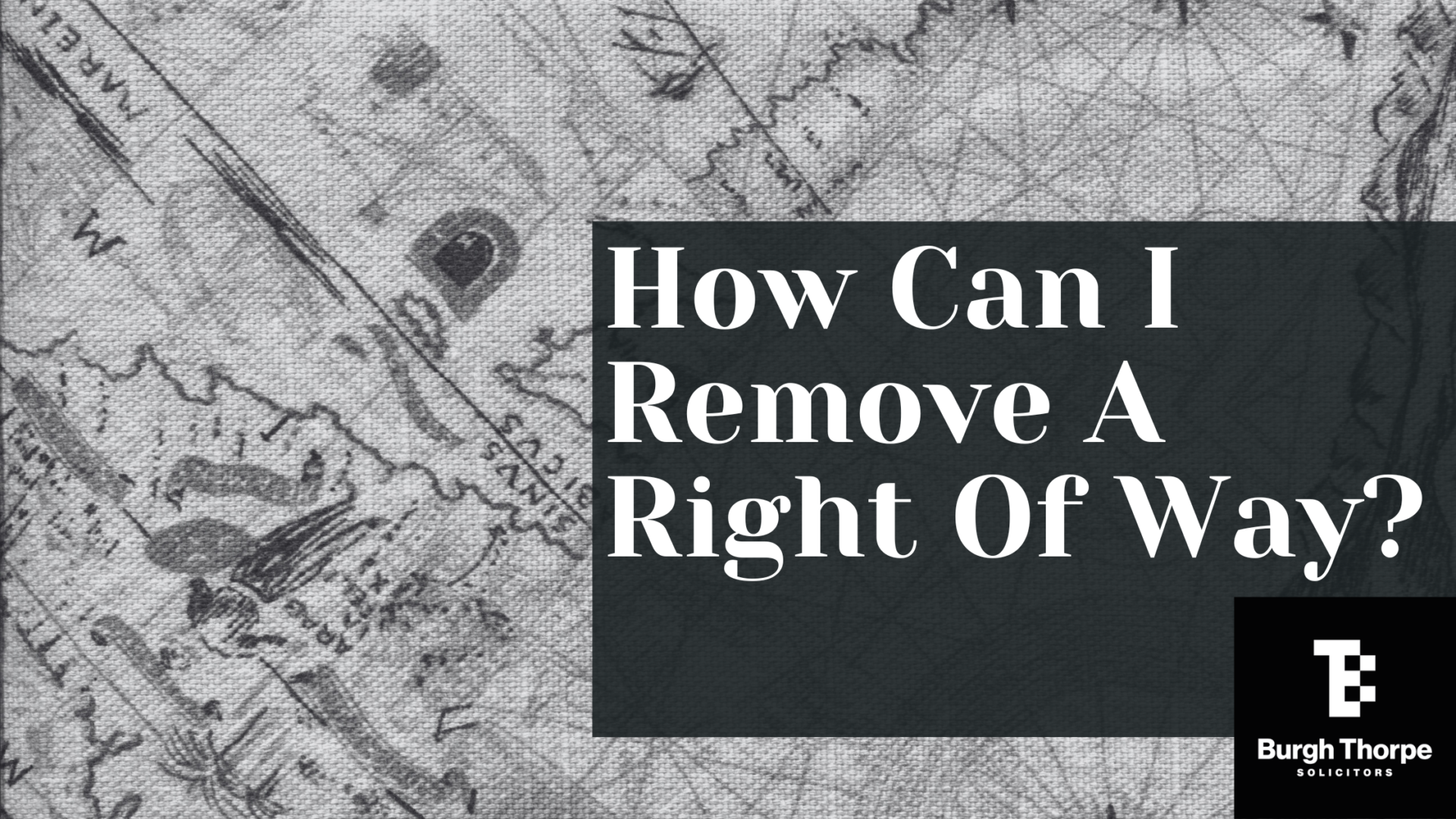How Can I Remove A Right Of Way?
Conveyancing Posted 31 March 2025One of the most common issues that our residential conveyancers come across is surrounding the rights of way. We are commonly asked how a homeowner can remove a right of way. So, in this blog post we look at what a right a way is, how it was created and if it can be removed.
If you have any further questions or need help removing a right of way from your property, then call our property dispute specialists here at Burgh Thorpe Solicitors in Peterborough.,
What is a Right of Way?
A private right of way of a type of ‘easement’. It gives the landowner a right to use part of another person’s property in a particular way.
How is a Right of Way created?
These are three main ways in which a type of easement is created for rights of way. One of these ways is known as an express grant and this is created by deed. It will often happen when a person sells part of their land but chooses to retain certain rights over the portion of the land that they have sold. In this case, the deed must expressing record the express grant for it to be legal.
Another way in which it can be created is through an implied grant. This is similar to an express grant however the law implies its existence. This means that it will not be recorded in the deeds. It may happen when someone acquired land for example. However, the only means of access is over the land that is retained by the seller. In this can, the buyer must prove that this right of way exists.
The third way is a prescription. This describes an easement that is acquired through long use. This right of way will occur if a person can demonstrate that one landowner has used another person’s land without force, secrecy or permission. This must have happened continuously and without interruption for at least 20 years.
Can you remove a Right of Way?
Once a right of way has been created it can be very difficult to remove. However, it is possible with the right legal support. This is why we recommend speaking to our residential conveyancers that specialise in property disputes.
A right of way can be removed if the parties involved expressly agree to end the right of way by entering into a formal deed of release. The person with the benefit of the right can demonstrate by their actions that they intend to abandon it. A legal principle known as an ‘estoppel’ can be bought in. This will terminate the right of way.
It can be very easy to find yourself embroiled in a costly and stressful domestic property dispute when it comes to rights of way. This is why we recommend gaining legal advice to ensure you act legally and are fully protected.
